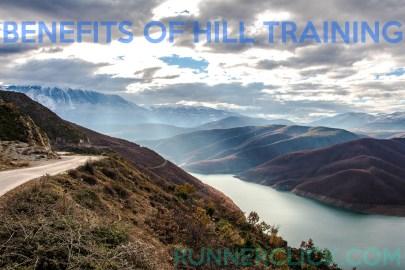Hills training with unbelievable benefits for runners

It seems that a lot of runners often view hill training as the enemy, hills are challenging and tough. They break your regular rhythm and make you harder to run a fast pace, all with a tremendous strain on your body afterwards. I also tend to agree, however If you live in mountainous areas and don’t have many options other than hill training, you should read this article as it may provides some interesting information which not many people actually realize about hill running.
The unbelievable benefits which hill training bring to runners.
- Today, most runners understand the importance of combining strength training with running instead of strength-specific work in the gyms, through squats, arm extensions or leg and shoulder presses which are done in isolation of running, focusing on individual joints as well as only small sets of muscles. Whereas, hill training forces the muscles in your legs, hips, feet and ankles to act in a coordinated rhythm. Plus, during uphill sections your muscles must work harder as you will also have to overcome gravity in order to get up the hill. Thanks to regular practice, you can get more power, improving the length and speed of your stride.
- According to research, runners that train on hills often have higher aerobic enzyme concentrations in their quadricep muscles, permitting your muscles to perform at high intensity for longer periods without tiredness in comparison to runners who train on flat terrain. This Heightened aerobic power improves your speed through accelerating each leg forward more quickly as you run, while also improving knee lift. In addition, runners who practice hill training are also shown to be lees likely to lose fitness, even when they take lots of time off from training, as opposed to those who run on flat roads.
- Different types of hill workouts bring different benefits. For example:
- Steep Hill Sprint is to run for 10-15 seconds up a steep hill at maximum effort. This type is designed to increase maximal stroke volume in the heart as well as improve and activate the function of the neuromuscular system.
- Long hill repeat is the more popular type of hill training, which many runners practice to improve their hill running performance. These types of hill running are really great for improving VO2max and enhancing muscle strength.
- If you want to improve your ability to overcome hills on race day, a great way is to incorporate rolling hills into your long runs. Because combining rolling hills into your runs will provide the specific stimulus to your physiological and muscle systems, which may be faced on race day.

In short, running hills is good for both your body and your running ability. Hill training helps to increase leg-muscle strength,
improve stride length and speed and develop the cardiovascular system. In only six weeks of hard hill training, you can expect a significant improvement in your muscle speed and power.
If done right, you can even find added joy in your running life. Here is a little advise which has worked to help me fall in love with running hills. Running uphill and downhill are very important in this type of workout. There are some simple forms that can save you energy and help you become familiar with this exercise with greater ease.
Running uphill
(1) Keep your chest up and open: chest straight and open with a slight lean forward at a hip, not the stomach.
(2) Hold your eyes and head up, looking about 30 meters in front of you. Your arms should swing straight and back with a 90-degree angle at the elbow, not across your body.
(3) High knee drive off the hill, not into the hill. Remember to land on the ball of your foot in order to spring up the hills.
(4) Plantar flex the ankle for maximum power when pushing off the ground: Paying attention to plantar flexion could help you to save a lot of energy, getting up the hill faster and without wasting lots of energy.
Running downhill
Even though downhill running doesn’t require as much effort as running uphill, having the right downhill technique will still make a big difference to your performance.
1. Have a slight lean (Don’t overdo the lean) forward at the hips to take advantage of the downhill. You just need tilt lightly to benefit from gravity.
2. Relax your arms and only move slightly forward and back. Don’t swing them to the sides, because this will waste your energy. Like running uphill, keep your head and your eyes up, look forward.
3. Land on ground at midfoot to maintain speed while still staying in the control, just slightly in front of your pelvis. It is not good to extend your leg too much because this will make you land on your heel, which is likely as a breaking motion.
4. Stride length should be naturally extended when running downhill. You don’t have to pay much attention on this because the grade of the hill and the pace when you run downhill will do this naturally for you.
Above are some benefits to hill workouts as well as some simple form for running up or down hills effectively, especially for those who want to start with this kind of training.
Latest Articles
 Is Running on a Treadmill Easier Than Running Outside?Runners have their own preferences, whether it is treadmill running, running outside on the road, or exploring trails. So...
Is Running on a Treadmill Easier Than Running Outside?Runners have their own preferences, whether it is treadmill running, running outside on the road, or exploring trails. So... Is It OK to Use Trail Running Shoes on the Road?While trail running shoes can be used on roads, especially in situations where a runner encounters mixed terrains or pref...
Is It OK to Use Trail Running Shoes on the Road?While trail running shoes can be used on roads, especially in situations where a runner encounters mixed terrains or pref... How to Fix Sore Quads After Running?Rest, ice, gentle stretching, and over-the-counter pain relievers can help soothe sore quads after running. Also, ensure ...
How to Fix Sore Quads After Running?Rest, ice, gentle stretching, and over-the-counter pain relievers can help soothe sore quads after running. Also, ensure ... 10 Fruits With The Most Electrolytes to Replace Sports DrinksThese fruits are high in electrolytes such as potassium, magnesium, and calcium, essential for hydration, muscle function...
10 Fruits With The Most Electrolytes to Replace Sports DrinksThese fruits are high in electrolytes such as potassium, magnesium, and calcium, essential for hydration, muscle function...

